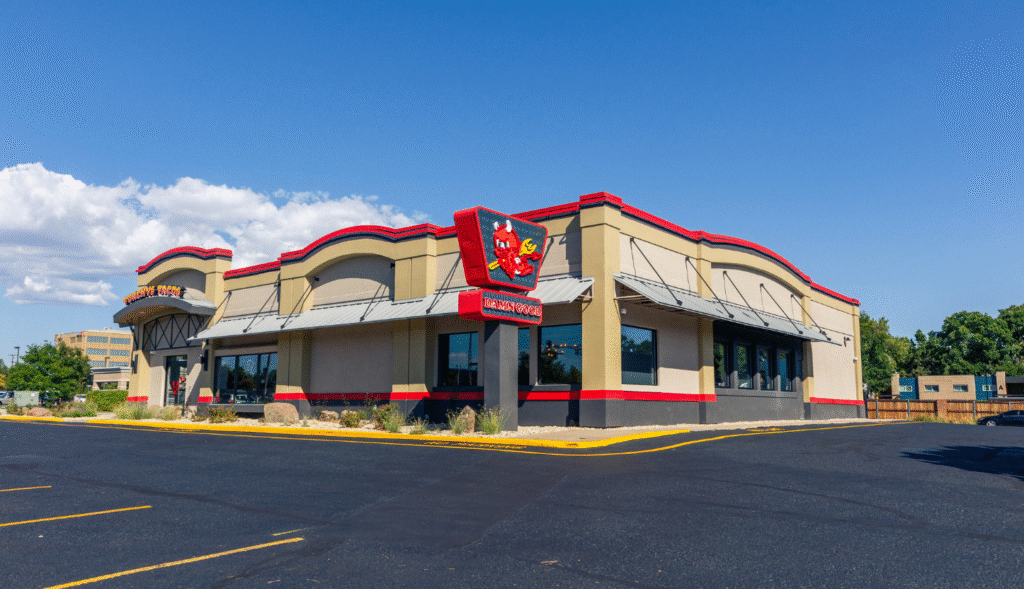Hello
What Torchy’s Tacos Marketing Theme Has in Common with Six Thinking Hats
At a glance, Torchy’s Tacos and Six Thinking Hats might seem like they belong in totally different worlds—one dishing out rebellious tacos and spicy queso, the other helping leaders think more effectively in structured meetings. But underneath the surface, they share a common philosophy: using color and symbolism as powerful tools to guide experience, evoke emotion, and bring structure to chaos.
Let’s break down how Torchy’s bold branding and de Bono’s thinking framework surprisingly mirror each other.
1. Color as a Communication Tool
Torchy’s marketing is drenched in vivid reds, yellows, blacks, whites, greens, and blues—a bold and deliberate palette that captures the brand’s energetic personality. Red and yellow ignite feelings of heat, excitement, and indulgence, while black adds edge and intensity. White elements provide contrast and clarity, making bold visuals pop. Green hints at freshness and creativity, and blue, though subtle, brings balance and control to the visual mix. At the center of it all is the iconic red devil mascot, sending a clear message: This place is wild, fiery, and unapologetically fun.
Similarly, de Bono’s Six Thinking Hats uses colors to represent different modes of thinking:
- White: Objective facts and information
- Red: Feelings, instincts, gut reactions
- Black: Caution and critical judgment
- Yellow: Optimism and benefits
- Green: Creativity and new ideas
- Blue: Process control and overview
Each color in de Bono’s system triggers a mental shift, just as Torchy’s color scheme triggers an emotional shift. In both cases, color is a tool to drive behavior, not just an aesthetic choice.
Commonality: Color is used with purpose—to evoke emotion, define function, and direct experience.
2. Symbols That Define Identity and Behavior
Torchy’s devil logo isn’t just a mascot—it’s the embodiment of their brand voice. Mischievous, spicy, a little irreverent. It tells you everything you need to know: This isn’t your grandma’s taco joint.
Likewise, in Six Thinking Hats, each “hat” acts as a symbol—like a uniform you mentally put on to focus on a particular perspective. When someone “wears the red hat,” they know they’re speaking emotionally. The blue hat? They’re guiding the process.
Both systems use symbols to reinforce identity and intention. The devil and the hats are shorthand for how to behave, think, or feel in a specific moment.
Commonality: Whether it’s a red devil or a red hat, symbols reinforce roles, set expectations, and make ideas memorable.
3. Organized Diversity
Torchy’s menu is wild—fried chicken tacos, jerk chicken, pickled jalapeños, avocado sauce—but it’s all tied together through consistent branding. Their chaotic flavor combinations are given structure through clear themes: bold, fiery, unexpected.
Six Thinking Hats also thrives on diverse input, but keeps it structured. Instead of emotional arguments mixing with data analysis and creative ideas in one messy discussion, each hat isolates that thinking style, allowing teams to work through each lens one at a time.
Commonality: Both promote wild variety—but within a system. It’s structured creativity.
4. Emotional and Psychological Engagement
Torchy’s doesn’t just sell tacos—they sell an experience. Their marketing plays with emotion: humor, excitement, nostalgia, even a bit of danger (Diablo sauce, anyone?). Their colors and logo are designed to stimulate appetite and emotional excitement.
The Six Thinking Hats explicitly incorporates emotion into decision-making. The Red Hat encourages gut feelings. The Yellow Hat fuels hope and enthusiasm. The system acknowledges that good thinking isn’t just logic—it’s emotional too.
Commonality: Both use visual and psychological cues to trigger emotional engagement and guide responses.
Final Thoughts
Torchy’s Tacos and Edward de Bono’s Six Thinking Hats may serve entirely different purposes, but they share a deep understanding of how color, symbols, and structure can shape experience.
- One guides taste buds, the other guides minds.
- One uses a devil, the other uses hats.
- But both rely on intentional design to lead people through a specific, repeatable, and powerful journey.
Whether you’re building a brand or building a better decision-making process, the secret might be the same: clarity through color, identity through symbolism, and structure within creativity.
Learn More: Heart of a Champion

